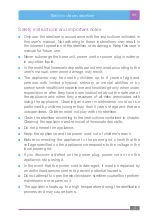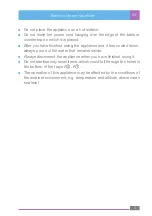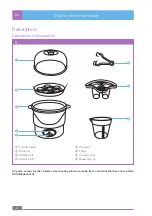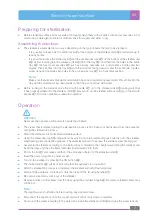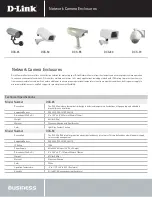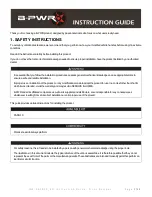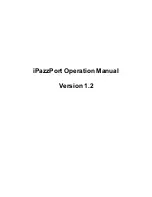
Electric steam steriliser
EN
8
Cleaning the appliance and removal of limescale deposits
Cleaning
■
After every use, disconnect the steriliser from the power socket and allow it to cool down .
■
For hygiene reasons, pour out any remaining water from the steriliser unit
A
3
.
■
Clean the outer and inner side of the steriliser unit
A
3
using a damp cloth .
!
Attention:
Do not clean the steriliser, its parts or its accessories using abrasive products, chemical solvents, cleaning
products, alcohol, sharp utensils or steel wool .
!
Attention:
Never place the steriliser directly under running water or submerge the appliance or its parts and accessories
in water or other liquids!
■
Never wash the steriliser in a dishwasher! The lid
A
1
, trays
A
2
,
A
7
, tongs
A
6
and measuring cup
A
8
can be washed in warm water containing dishwashing detergent .
■
After cleaning it, store the steriliser in a clean dry location .
Removing limescale deposits
■
When using the steriliser, small stains may appear on the heating element in the steriliser unit
A
3
. These are
accumulated limescale deposits . The harder the water, the faster limescale deposits will form .
■
Disconnect the steriliser from the power socket and allow it to cool down .
■
It is recommended to remove limescale deposits from the appliance every 4 weeks to ensure further effective
operation of the appliance .
■
Mix 100 ml of white vinegar with 100 ml of hot water and pour this solution into the steriliser . Allow this solution
to act for approximately 30 minutes in the steriliser unit
A
3
and then pour it out .
■
Never turn on the appliance while the water and vinegar solution is in the steriliser unit
A
3
.
■
After emptying out the steriliser, repeatedly clean the outer and inner side of the bottle warmer using a cloth .
In the event that despite this limescale deposits continue to appear, repeat the limescale removal procedure .
Technical specifications
Model number . . . . . . . . . . . . . . . . . . . . . . . . . . . . . . . . . . . . . . . . . . . . . . . . . . . . . . . . . . . . . . . . . . . . BBS 3010
Voltage and power input of the appliance . . . . . . . . . . . . . . . . . . . . . . . . . . . 230V ~ 50 Hz, 440 W
Protection class against injury by electrical shock . . . . . . . . . . . . . . . Protection class I .
Operating conditions . . . . . . . . . . . . . . . . . . . . . . . . . . . . . . . . . . . . . . . . . . . . . . . . . . . . . . . . . . Ambient temperature: 7°C to 37°C



